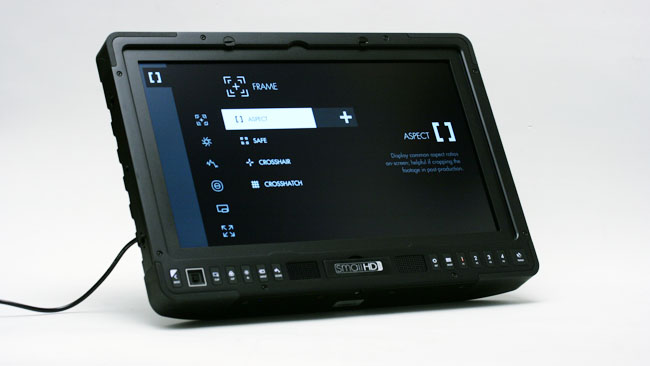SmallHD’s 1703-P3 on test
By Jim Bask
By Phil Rhodes from RedShark News

The 1703-P3 enjoys a peak brightness of 450 nits, which is healthy for a non-HDR display. For more power, there’s the 1703-HDR which is capable of 1100 nits and goes for a dollar less than $4000. The HDR variant’s contrast ratio, at 700:1, is actually less than the 1500:1 claimed for the P3 version we’re reviewing, which is something of an inevitable compromise of very high output TFT-LCD panels. The 1703 HDR, which supports Rec. 709 colour only, is perhaps most directly intended to give us sunlight readability, although HDR features, in general, will make good use of the high bit depth handling that’s available on all three 1703-series displays.
Ten bits per channel would give us a billion colours; twelve would give us a rather alarming 68,719,476,736, though it isn’t so much that we actually need to display all those colours. Liquid crystal display panels won’t actually do that anyway. It’s more that we need extra data to take into account the losses of processing. Taking a (notionally) very low-contrast log signal and turning it into a (notionally) very high contrast HDR picture means that the brightness steps between digital code values get spread out a lot, so there had better be a lot of them to begin with. With intent to distribute HDR at 10-bit, we’d better get used to using more than that during production, so the 12-bit colour, providing 4096 levels per RGB channel, is just what we need.
The third 1703 variant is a studio version, offering full coverage of the Rec. 709 colour gamut for conventional television production, or where people prefer a straightforward 709 preview. It’s a little less powerful, maxing out at 300 nits, but at $3000 it’s also the most affordable, and the electronics are identical. The calibration, LUTs and input-output processing are all there, it can load LUTs and save stills to SD card, that indestructible shell is the same and that tidy front panel layout with the rubberised keys is common to all models…

